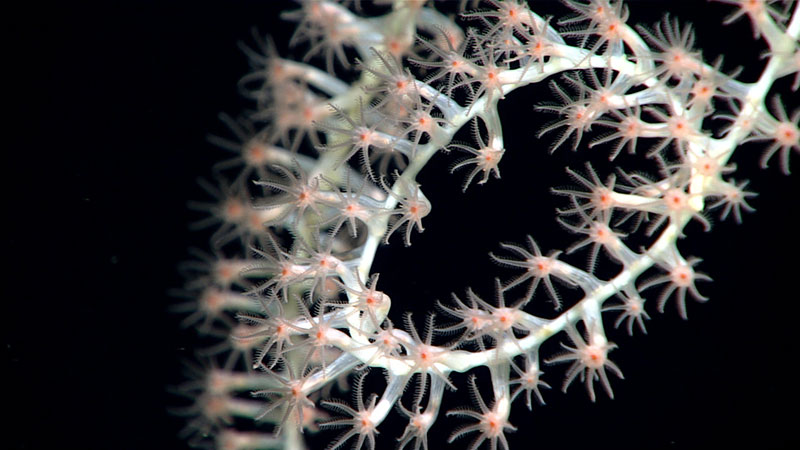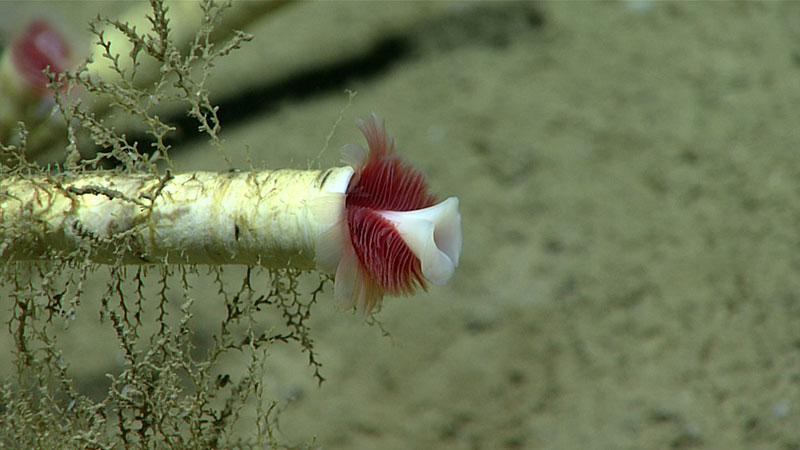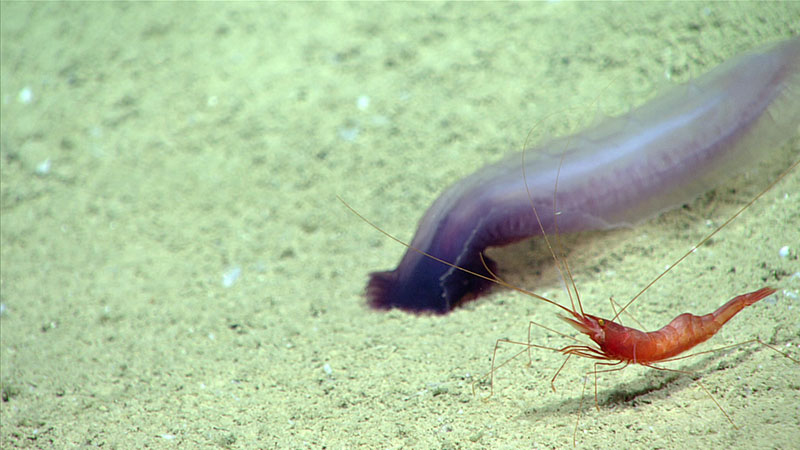-

The coiled tip of an isidid bamboo coral whip (Lepidisis caryophyllia) found growing out of a sediment substrate. Image courtesy of the NOAA Office of Ocean Exploration and Research, Gulf of Mexico 2017. Download larger version (jpg, 724 KB).
-

The anterior end of a chemosynthetic siboglinid tubeworm, Lamellibrachia sp., protrudes from its tube. The red “feathers” are respiratory tentacles filled with hemoglobin-containing “blood.” The white structure is called an obturaculum and functions as a trapdoor that protects the opening when the worm withdraws into its tube. Brown branched hydroid colonies grow on the tube. Image courtesy of the NOAA Office of Ocean Exploration and Research, Gulf of Mexico 2017. Download larger version (jpg, 757 KB).
-

A sea cucumber (Benthodytes sp. ) and a shrimp (Nematocarcinus sp.) happen to wander near each other. Image courtesy of the NOAA Office of Ocean Exploration and Research, Gulf of Mexico 2017. Download larger version (jpg, 849 KB).